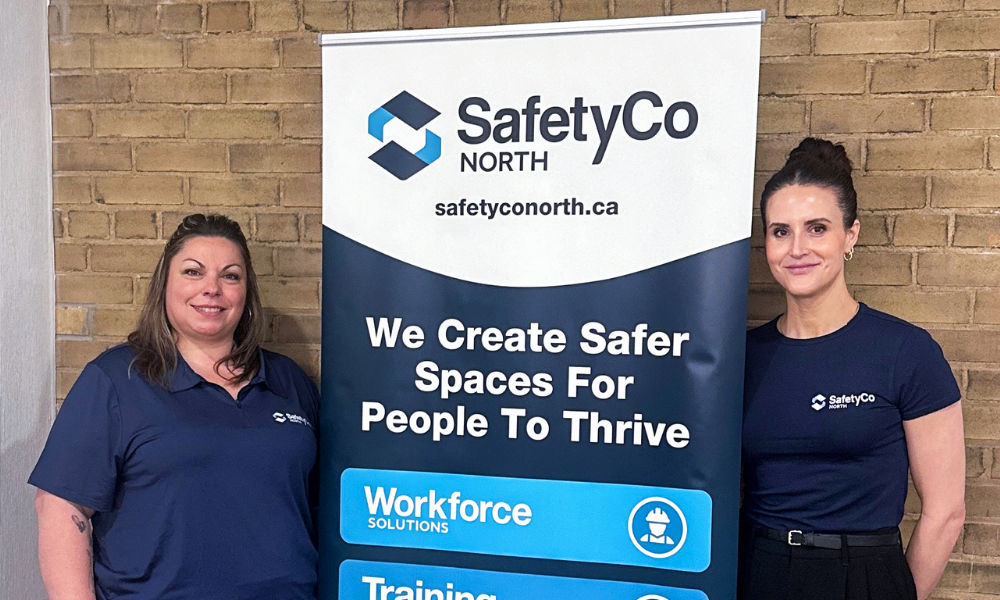‘Many companies have policies and even procedures to deal with harassment and bullying. Most of them miss the mark’

People in safety invariably think about the physical when someone mentions injury, yet the shifting workplace and recent legislation now gives more appropriate recognition of the psychological injuries that employees can suffer.
Managing psychological risk before an incident, and when one occurs, takes good risk assessments and an understanding of the workplace. We hear the term “toxic workplace” much more often than we used to, but it is not a well-defined term.
Often the toxic workplace label is applied for repeated instances of harassment or bullying, and such behaviour is normalized. While it is possible to determine whether a workplace is toxic or not, it takes considerable time and effort. Tools are available, but comparative data can be scarce.
The term is often used by people complaining of inappropriate behaviour such as being harassed, bullied, or assaulted in the workplace. A workplace can be toxic for one person and not toxic for another. It is often best to focus on specific allegations, which is a key part of the investigative process.
How real is the risk?
In looking at data from around the world, virtually every workplace has some harassment and bullying. That is not because employers set a bad example or a workplace is toxic. It is just that, on average, 20 per cent of any workforce will indicate they have experienced harassment within the past year.
Harassment and bullying are a fact of life. As there were bullies in the schoolyard, there are bullies in the workplace.
Risk assessment is a somewhat subjective exercise, and when assessing psychological risk (as employers are required to do for any workplace hazard), many participating would say that the primary risks are simply not present. That would be bullying, harassment and workplace violence.
Once we admit that this is a reality, then assessing the risk becomes possible – sort of. Many companies have policies and even procedures to deal with harassment and bullying. Most of them miss the mark. Employees, managers, and supervisors are made aware of these policies but seldom provided with any training. Certainly not very effective risk mitigation.
Has the employer done a baseline survey to determine the harassment levels and where the hot spots might be? That seems a prudent part of risk management since these hazards are hard to see in any traditional sense.
Dealing with an incident
The term incident conjures an image of an injury, spill, or some property damage. Safety systems have processes to deal with these. These procedures are essential controls to limit further harm. There is an intervention to limit the severity of the incident. However, they are inappropriate for dealing with a psychological injury incident or potential incident.
Consider an injury. The first order of business is first aid or medical aid. Those who cannot return to normal duties are given modified duties and supported in going to physiotherapy. This is essential to maintain the relationship with employees, their well-being, prevent financial loss to both sides, and assist with recovery.
When someone complains of harassment or bullying, does the employer handle the complaints as if a psychological injury has occurred? It is highly likely that such an injury has occurred and is still in progress.
In standard health and safety methodology, there would be an attempt to get a report and a statement. What systems are in place to protect the psychologically injured person from being further injured?
Employees who are psychologically traumatized need assistance. It may take months to get any definitive diagnosis, but it is often plain that someone is suffering. How does the employer respond? Carefully. Psychological trauma is a mental disability protected by human rights legislation, just like an injury’s physical disability. There is a duty to accommodate.
Are there arrangements for psychological first aid, counselling, modified work? The situation is no different from providing first aid, medical assistance or physiotherapy and modified work in an injury case.
Many may see this as claims management. Managing the situation appropriately can save time, grief, and money later. It is an appropriate risk management of the newest and possibly highest risk workplace hazard.
Investigating
Many companies say they use their usual process for health and safety investigation process to investigate cases of workplace bullying and harassment. That is a very underinformed view. These investigations are different from the normal investigations done in the past.
For example, things may cross the line to criminal offences. Yelling and intimidation can easily cross the line to assault, as can inappropriate grabbing or touching. Should the company be investigating at all? Some do and continue to investigate. Even after the police charge and convict the individuals, they are still “investigating.”
Such investigations employ a different methodology and require investigators with significant skill and experience. Getting an investigation wrong can be costly.
Poor investigations
Often, an internal person investigates. For more complex cases, such as where someone’s job is on the line, using an internal investigator may be appropriate only for large organizations that may have someone dedicated to that function.
Investigations tend to be done by HR or health and safety practitioners, and both are guilty of failing to conduct competent investigations, as the courts have pointed this out. These investigations can be scrutinized by judges, lawyers, unions, outside experts, and even crown prosecutors.
People involved in these cases have many options to be heard and to demand their rights. They can go to the court, labour boards, human rights board or commissions, and regulators, to name a few.
A poor investigation can land an employer in arbitration or court. The same can be said of a poor external investigator.
With the business of investigating largely unregulated, many “professional investigators” are nothing of the sort. They can, and do, get sued for incompetent investigations, which leave the employer that hired them in a poor position when the investigation is challenged before the courts or other bodies.
Costs
Like anything in health and safety, the costs of failing to respond to any incident appropriately can be substantial. Across Canada, harassment and bullying, or workplace violence, are workplace hazards. This imposes a duty on the employer to identify these hazards to employees and put risk mitigation measures in place and appropriate mechanisms to respond to any incident.
Aside from lawsuits or tribunal awards, workers’ compensation costs can surpass $100,000 per claim. For most employers, $100,000 in claim costs means $150,000 or more in premium costs, and perhaps a higher premium rate.
High risk
Businesses correctly focus on high-risk scenarios to mitigate future losses. I have written previously, harassment is perhaps the greatest workplace hazard of our generation. The instances may not occur often, but the cost to the business can be severe. In terms of high-risk incidents, this risk deserved attention.
Bullying and harassment now tops the list of complaints to safety regulators these days. That is surprising for something that was only declared a workplace hazard a few years ago.
No one was really ready to deal with the surprising reality. No group has received directed training on harassment and workplace violence investigations as part of their professional training. That means there are also very few experienced investigators.
There are courses available, both good and bad, but these are only courses about the process. They impart knowledge but do not qualify people to be investigators, and they do not impart the experience and skills necessary to be effective investigators of bullying and harassment.
Health and safety practitioners do get training in investigations, but those are a different sort of investigations. The basic methods are similar, but the structure of the investigations are very different. These investigations look for causes of an incident and ways to close the health and safety system gaps.
A harassment investigation looks to establish what happened. In these cases, people may not even agree that anything happened at all. The investigator is tasked with determining allegations and their validity. This means determining what happened and then determining if what happened breaches company policy or the law.
There is still the collection of evidence using interviews and other methods. Analysis of the evidence is required, and certainly, there are findings.
Administrative justice
Like natural justice, the term refers to people’s rights to transparency about the processes that will affect them. For example, the process for making a complaint and investigating one must be clearly laid out for all stakeholders.
The employer must have clear procedures for reporting, responding to, and investigating harassment and workplace violence. Having a policy and using existing processes is also often not good enough. These are high-stakes investigations, and trust in the organization can be badly eroded by these events.
As workers and unions become better informed on this area, the requirement to meet these rights becomes more pronounced, adding to the employer’s risk exposure.
Is your employer ready for the inevitable harassment or workplace violence complaint?
Are they unknowingly taking a risk that can have serious consequences?






